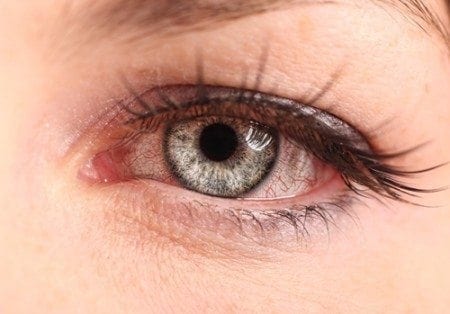Spectral power distribution is a visual representation of color outputs from a light source.
According to the Illuminating Engineering Society, SPD curves can be used to compare the color composition in different light sources. Each type of light has its own color properties, which are based upon the wavelengths present in an illumination source. Although the human eye sees a certain color, light is actually created from blending various hues of the visible spectrum together.
An SPD curve has all of the colors of the visible spectrum laid out on a graph. Wavelengths are noted on the x-axis in nanometers and relative power is on the y-axis. Light with the shortest wavelength is blue and light with the longest wavelength is red.
SPD curves vary across light sources, as they all have subjective properties. Natural daylight has even distribution of power across all wavelengths. Tungsten incandescent lighting has significantly more red light than blue light. Most of the power in high-pressure sodium lamps goes to yellow, green and orange light.
Fluorescent lighting is low on red, but spikes with yellow, green and blue light. Ceramic metal halide lighting has the highest power output from yellow, orange and green light as well as fair amounts of red and blue light.
These measurements are not static, as each individual lighting product has different specifications.
Wavelength and the visible spectrum
Light travels in the form of waves.
For the sake of a visual representation, imagine large ocean waves crashing on a shore. Each other those waves has a crest and a trough. Crests are the highest point from a rest position a wave can achieve and troughs are the lowest point a wave can achieve from a rest position. Wavelength is the distance between two crests.
NASA states that wavelength is equal to the speed of the wave divided by the frequency. This equation is why red light and blue light have different wavelengths. Each color travels at a different speed, even though the difference may not be noticeable to the naked eye.
Light, known as the visible spectrum, consists of all of the waves the human eye can see. It is a small part of the entire electromagnetic spectrum comprising x-rays, microwaves, infrared waves, radio waves, long radio waves, ultraviolet rays and gamma rays. The human eye can see light with wavelengths from about about 380 to 760 nanometers. A SPD curve shows how much of each of the visible waves is emitted from a light source.
Describing color for electric lighting
Color for electric lighting does not blend in the same way our preschool teachers taught us to mix paint.
The primary colors for light are red, green and blue. For some, this combination seems odd, as we traditionally learn that primary colors are red, blue and yellow. Light works a little differently.
Yellow light, for instance, is not yellow. It is actually a combination of a a lot of green and red light and very little blue light. Black is the complete absence of light, and white light is a combination of large amounts of red, blue and green light.
In most residential and commercial uses, colored light is not necessary as white light is the norm with varying color temperatures.
Deciphering spectral power
A special tool is used to measure spectral energy.
These tools are called spectroradiometers, according to the IES. They determine radiometric, photometric and colorimetric qualities of a light source and most often use prisms or diffraction gratings to disperse the light.
The measurements are converted into a SPD graph, which includes UV and IR wavelengths as well as very small band pass increments less than 1 nanometer.
Spectroradiometers are not commonly owned devices because they are expensive and not easy to transport. However, consumers can request a SPD curve for any lighting option they are considering.
Using spectral power distribution in lighting decisions
Now that we have an established understanding of the science of light, how is it going to help purchase the best lighting products? Each kind of light source has different effects on vision and mood due to the wavelengths they give off. Checking out an SPD graph is simply another way to ensure that the colors emitted by a light source will not have any negative implications for sight or emotion.
According to a report from the city of Southampton, N.Y., blue-rich white light is in high demand. High intensity discharge lamps, such as metal halide and high pressure sodium bulbs, emit more energy at the middle of the spectrum. LEDs with higher color temperatures give off cooler white light and emit more energy from the blue end of the spectrum.
Choosing between those options comes down to the application. Eyes that have adapted to darkness are more sensitive to blue light, which means that blue-rich white light will seem brighter than warmer light. Based upon this factor, outdoor lighting sources would need to emit more blue energy than red energy for the most brightness.
Blue-rich white light is also beneficial as people age. The eye lens begins to yellow more as people get older, which causes more blue light to be absorbed. As the lens absorbs more, less light gets to the retina. Blue-rich white light sources help slow this change by providing enough light and contrast.
Preventing glare
An SPD curve can also show whether or not glare caused by a light source will be discomforting.
Light with a wavelength of about 420 nanometers has the greatest potential to create discomfort glare, according to the Southampton report. For older people, any light source with high spectral output below 500 nanometers will have a lot of glare.
Examining an SPD curve is an easy way to figure out what light source works best for a certain space. Even if people do not understand all the science that goes into the measurement, they should be aware that such a resource exists to give them more insights into making a lighting decision.


